2,6-Dichloro-4-nitroaniline
Synonym(s):2,6-Dichloro-4-nitroaniline;Dichloran
- CAS NO.:99-30-9
- Empirical Formula: C6H4Cl2N2O2
- Molecular Weight: 207.01
- MDL number: MFCD00007677
- EINECS: 202-746-4
- SAFETY DATA SHEET (SDS)
- Update Date: 2025-09-25 17:15:13
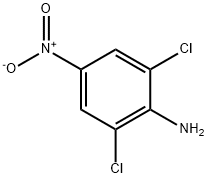
What is 2,6-Dichloro-4-nitroaniline?
Chemical properties
yellow granular powder and chunks
Chemical properties
Dicloran is a yellow crystalline solid or power. Odorless.
The Uses of 2,6-Dichloro-4-nitroaniline
Dichloran is a component for pesticide formulations.
The Uses of 2,6-Dichloro-4-nitroaniline
Dicloran is a protectant fungicide used to control various rots pathogens (Botrytis, Monilinia, Rhizopus and Sclerotinia) in a wide variety of fruits and vegetables.
The Uses of 2,6-Dichloro-4-nitroaniline
It is used as dyestuff, agricultural and pharmaceutical intermediate.
Definition
ChEBI: A nitroaniline that is 4-nitroaniline in which the hydrogens at positions 2 and 6 are replaced by chlorines. An agricultural fungicide, it is not approved for use in the European Union.
Agricultural Uses
Fungicide: Used to control fungi on a variety of crops. The top crop usages in California are on celery, head lettuce, and grapes (table, wine and raisin). Not approved for use in EU countries. Actively registered in the U.S. Sixty-five global suppliers.
Trade name
AL-50®; ALLISAN®; BORTRAN®; BOTRAN®; DITRANIL®; FUMITE DICLORAN SMOKE ACARICIDE®; RESISAN®; RD-6584®; U-2069®
Potential Exposure
Dichloran is a substituted benzene/ chlorophenyl fungicide Used to control fungi on a variety of crops. The top crop usages in California are on celery, head lettuce, and grapes (table, wine and raisin).
Metabolic pathway
The metabolism of 2,6-dichloro-4-nitroaniline (DCNA) in rat hepatic microsomes gives rise to the unique metabolite 3,5-dichloro-4-aminophenol (DCAP).
Shipping
UN2811 Toxic solids, organic, n.o.s., Hazard Class: 6.1; Labels: 6.1-Poisonous materials, Technical Name Required
Purification Methods
Crystallise Dichloran from aqueous EtOH or *benzene/EtOH. [Beilstein 12 IV 1681.]
Degradation
Dicloran (1) is stable to hydrolytic degradation (pH 5-9) up to 300 °C. Degradation occurred when dicloran in pH 7 solution was irradiated with UV light (>290 nm); the estimated DT50 was 41 days (PM). Smith-Downey and Fordham (1990) reported the hydrolysis of dicloran in 6 M base to yield 3,5-dichloro-4-aminophenol(2) as the only product detected.
Incompatibilities
Keep away from strong oxidizing agents, strong acids; acid anhydrides; acid chlorides; acetic anhydride; and carbon dioxide
Waste Disposal
Consult with a licensed waste disposal service or environmental regulatory agencies for guidance on acceptable disposal practices. Dissolve or mix material with a combustible solvent and burn in a chemical incinerator equipped with an afterburner and scrubber
Properties of 2,6-Dichloro-4-nitroaniline
| Melting point: | 190-192 °C (lit.) |
| Boiling point: | 130°C 2mm |
| Density | 1.6257 (rough estimate) |
| vapor pressure | 1.6 x 10-4 Pa (20 °C) |
| refractive index | 1.6560 (estimate) |
| Flash point: | 130°C/2mm |
| storage temp. | Keep in dark place,Inert atmosphere,Room temperature |
| solubility | 0.006g/l (HSDB) |
| pka | pK1:-3.31(+1) (25°C) |
| form | neat |
| color | Light Yellow to Yellow |
| Water Solubility | 1 g/L (60 ºC) |
| BRN | 1459581 |
| CAS DataBase Reference | 99-30-9(CAS DataBase Reference) |
| NIST Chemistry Reference | 2,6-Dichloro-4-nitroaniline(99-30-9) |
| EPA Substance Registry System | Dichloran (99-30-9) |
Safety information for 2,6-Dichloro-4-nitroaniline
| Signal word | Danger |
| Pictogram(s) |
 Skull and Crossbones Acute Toxicity GHS06  Health Hazard GHS08  Environment GHS09 |
| GHS Hazard Statements |
H373:Specific target organ toxicity, repeated exposure H410:Hazardous to the aquatic environment, long-term hazard |
| Precautionary Statement Codes |
P262:Do not get in eyes, on skin, or on clothing. P273:Avoid release to the environment. P280:Wear protective gloves/protective clothing/eye protection/face protection. P314:Get medical advice/attention if you feel unwell. |
Computed Descriptors for 2,6-Dichloro-4-nitroaniline
2,6-Dichloro-4-nitroaniline manufacturer
SAKEM LLP
Cynor Laboratories
New Products
Indole Methyl Resin tert-butyl 9-methoxy-3-azaspiro[5.5]undecane-3-carboxylate Boc-His(Boc)-OH 2-CTC Resin 4-Chloro-7-tosy1-7Hpyrrolo[2,3-d]pyrimidine 5,7-Dibromo-1H-indole 2,5-dichloro-N-hydroxy-4,6-dimethylpyridine-3-carboximidamide 2,2-Dimethoxy-7-azaspiro[3.5]nonane hydrochloride 4-chloromethyl-5-methyl-1,3-dioxol-2-one (DMDO-Cl) R-2-BENZYLOXY PROPIONIC ACID 1,1’-CARBONYLDIIMIDAZOLE 1,1’-CARBONYLDI (1,2-4 TRIAZOLE) N-METHYL INDAZOLE-3-CARBOXYLIC ACID 4-((2-hydroxyethyl)thio)benzoic acid 1-(TERT-BUTOXYCARBONYL)-2-PYRROLIDINONE Methyl 6-methylnicotinate 3-Pyridineacrylic acid tert-Butyl carbazate TETRAHYDRO-2H-PYRAN-3-OL 2-((4-morpholinophenylamino) (methylthio) methylene) malononitrile 3-(4-morpholinophenylamino)-5-amino-1H-pyrazole-4-carbonitrile 2,4-dihydroxybenzaldehyde 1,3-Diethyl-1,3-Diphenylurea Methyl 2-methylquinoline-6-carboxylateRelated products of tetrahydrofuran
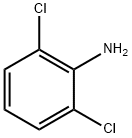

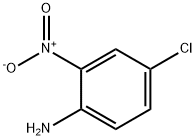
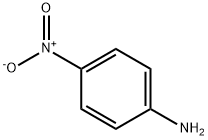
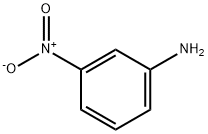
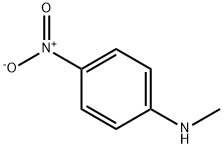
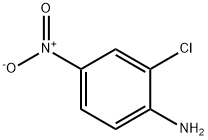
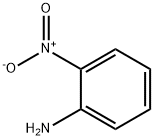
You may like
-
 99-30-9 4-nitro-2,6-dichloroaniline 98%View Details
99-30-9 4-nitro-2,6-dichloroaniline 98%View Details
99-30-9 -
 Dicloran 99%View Details
Dicloran 99%View Details -
 Dicloran 98%View Details
Dicloran 98%View Details -
 99-30-9 Dicloran 98%View Details
99-30-9 Dicloran 98%View Details
99-30-9 -
 99-30-9 99%View Details
99-30-9 99%View Details
99-30-9 -
 2,6-Dichloro-4-nitroaniline CAS 99-30-9View Details
2,6-Dichloro-4-nitroaniline CAS 99-30-9View Details
99-30-9 -
 2,6-Dichloro-4-nitroaniline CAS 99-30-9View Details
2,6-Dichloro-4-nitroaniline CAS 99-30-9View Details
99-30-9 -
 98% Industrial Grade 2,6 DICHLORO PARA NITRO ANILINE(99-30-9), PowderView Details
98% Industrial Grade 2,6 DICHLORO PARA NITRO ANILINE(99-30-9), PowderView Details
99-30-9
